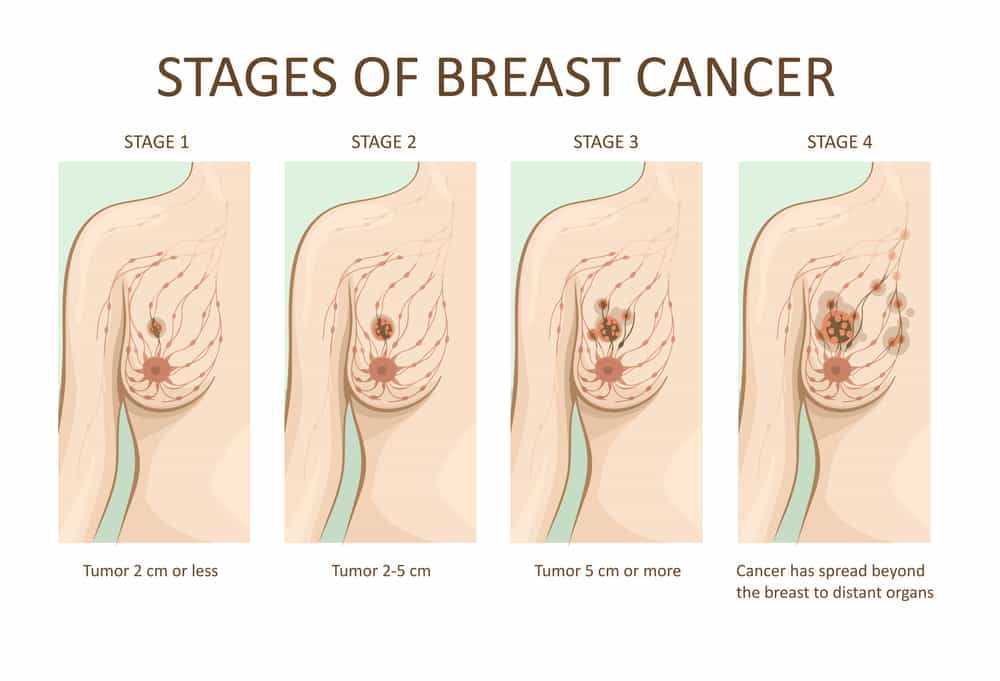Stages of breast cancer

The staging of breast cancer is determined after evaluating the tumor, its spread to lymph nodes and distant organs. It uses the same TNM system as other types of cancer but adapted to breast cancer specifically.
TNM refers to Tumor (T), Lymph Nodes (N), and Metastasis (M). Each one describes the current state of the disease. After evaluating each element, the results are joined in a 5-stage category:
- Stage 0: It is also known as carcinoma in situ. This type of cancer is causing no invasion to other parts of the breast or any adjacent tissue.
- Stage I: This type of cancer is starting to invade surrounding tissue in the breast. Localized lymph nodes are sometimes taken in this disease. It is divided into IA (tumor of up to 2cm with no distant spread and no lymph nodes involved) and IB (tumor of up to 2cm with no distant spread and local lymph node involvement).
- Stage II: Starting in stage II, breast cancer is larger than 2 centimeters and has spread to axillary lymph nodes (Stage IIA). In this group, we also have more invasive breast cancer that is up to 5cm and spreads to breastbone lymph nodes (Stage IIB).
- Stage III: At this stage, we have a breast cancer larger than 5cm with severe lymph node involvement (Stage IIIA). This type of cancer can spread to the skin or the chest wall (Stage IIIB) or reach lymph nodes in the collarbone (Stage IIIC).
- Stage IV: This stage includes invasive breast cancer that spreads to any area beyond the breasts, including distant metastasis.
